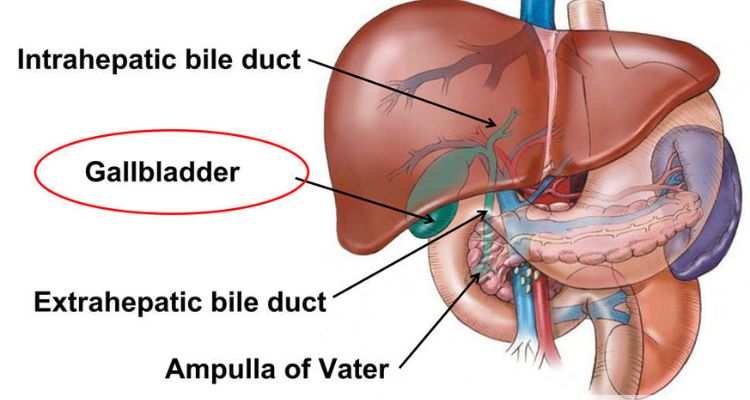|
Getting your Trinity Audio player ready...
|
What is Biliary Tract Cancer?
Biliary tract cancer, also known as cholangiocarcinoma, are group of cancers that arise within the duct system that carries bile from the liver to the small intestine. The biliary tract consists of the gallbladder and the bile ducts. Biliary tract cancers are rare but aggressive forms of cancer, often found at advanced stages due to their subtle early symptoms. Biliary tract cancers are classified based on their anatomical location in the bile duct system. The main types are:
Biliary tract cancer, also known as cholangiocarcinoma, are group of cancers that arise within the duct the system that carries bile from the liver Mto the small intestine. The biliary tract
consists of the gallbladder and the bile ducts. Biliary tract cancers are rare but aggressive forms of cancer, often found at advanced stages due to their subtle early symptoms. Biliary tract cancers are classified based on their anatomical location in the bile duct system. The main types are:
1. Intrahepatic Cholangiocarcinoma: Arises within the bile ducts located inside the liver. Although less common, it is often confused with liver cancer (hepatocellular carcinoma) due to its location. It accounts for approximately 10-20% of all cholangiocarcinomas.
2. Extrahepatic Cholangiocarcinoma: Occurs at the hepatic hilum, where the right and left hepatic ducts exit the liver and converge into the common bile duct but before it joins the pancreatic duct. This is the most common type of cholangiocarcinoma. Its strategic location often presents significant surgical challenges.
3. Gallbladder Cancer Originates in the gallbladder itself. Often asymptomatic until advanced stages and sometimes discovered incidentally during gallstone removal surgeries.
Epidemiology of Biliary Tract Cancers
Biliary tract cancers are relatively rare, accounting for approximately 3% of all gastrointestinal cancers
worldwide. In Western countries, the incidence of biliary tract cancers ranges from 1 to 2 cases per 100,000 individuals annually. The prevalence of biliary tract cancers especially gall bladder cancers is high in some regions in northern India, especially along the Gangetic belt, report higher incidences of gallbladder cancer, a part of biliary tract cancers..
Risk Factors of Biliary Tract Cancers
Inflammatory and Obstructive Conditions
Chronic inflammation caused by gallstones can lead to a condition known as cholecystitis. Over time, this persistent inflammation can increase the risk of gallbladder cancer and Other chronic inflammatory conditions like primary sclerosing cholangitis, choledochal cysts and bile duct stones, cause long-standing inflammation and bile duct obstruction, predisposing to development of BTCs.
Infectious Risk Factors
One of the most significant infectious risk factors is liver fluke infection, particularly with Opisthorchis viverrini and Clonorchis sinensis, parasites prevalent in certain Asian regions. These infections cause chronic inflammation of the bile ducts, significantly increasing the risk of cholangiocarcinoma. Conditions like hepatitis B and C infections and non- alcoholic fatty liver disease (NAFLD) are also associated with an increased risk, likely due to their contribution to chronic liver disease and cirrhosis.
Environmental & lifestyle factors:
The prevalence of gallbladder cancer in northern India has been associated with factors such as water pollution and the consumption of certain foods. Obesity, poor dietary habits, and chronic infections leading to gallstones or other biliary conditions may also contribute to the risk landscape in India.
Lifestyle factors, such as smoking, excessive alcohol consumption, and obesity, occupational exposure to certain chemicals, such as thorium dioxide (a radiographic contrast agent used historically) and asbestos, are linked with excessive risk of BTCs.
3. Genetic Factors
Certain genetic conditions, such as Lynch syndrome and mutations in specific genes like BRCA2, have been associated with an increased risk of developing biliary tract cancers. Family history also plays a role, indicating potential hereditary factors.
Diagnosis:
BTCs present with non-specific symptoms making it difficult to diagnose. Imaging modalities like USG, CT, MRI can help to diagnose and stage the tumors.
References:
1. Kirstein MM, Vogel A. Epidemiology and Risk Factors of Cholangiocarcinoma. Visc Med. 2016 Dec;32(6):395-400. doi: 10.1159/000453013. Epub 2016 Dec 1. Erratum in: Visc Med. 2017 Jun;33(3):226. doi: 10.1159/000477195. PMID: 28229073; PMCID: PMC5290446.
2. Mishra K, Behari A, Shukla P, Tsuchiya Y, Endoh K, Asal IT, Ikoma T, Nakamura K, Kapoor VK. Risk factors for gallbladder cancer development in northern India: A gallstones-matched, case-control study. Indian J Med Res. 2021 May;154(5):699-706. doi: 10.4103/jmr.UMR_201_19. PMID: 35532588; PMCID: PMC9210525.
Disclaimer:
This article is for general awareness of the people and should not be construed as treatment advice. Please consult your doctor in case you have any symptoms or require further information/clarification. This public awareness Initiative is supported by AstraZeneca Pharma India Limited.

